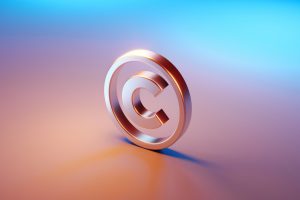This article is the third in a series identifying a number of myths related to IP rights, and explaining, in simple terms, steps you can take to recognize and protect the IP your business creates and acquires. In the first installment, the authors discuss trademark myths. In the second installment, they discuss copyright myths.
The final article in this three-part series identifying myths related to IP rights is Patent Myths.
A patent is the exclusive grant of a property right to the inventor to make, use, and sell an invention. It is an exclusionary right, which means no one else may make, use, or sell that invention without the inventor’s permission. There are several types of patents, each protecting different aspects of a product. As one example, a utility patent is suitable for protection of a machine, manufacture, or composition of matter. As another, a design patent protects the ornamental design of a functional item.
U.S. patent law is federal law (35 U.S.C. § 1-387). There is no state law governing patents, and a state cannot grant or enforce a patent. The United States Patent and Trademark Office issues patents. To qualify for patent protection, the subject matter of the invention must be new, useful, and non-obvious (as defined by statute). Generally, utility patents expire 20 years from the filing date of the application and design patents expire 15 years after the filing date.
Patent law is critical to development and protection of new technology. At the same time, the law has many nuances. Below is a high-level overview of some recurring issues that businesses face in connection with development and protection of new technology.
1. Patent law can protect my ideas.
This depends on how the idea is implemented. Almost every invention is based on a new and novel idea, but not all ideas are patent protectable. Patent law protects an idea only if it is implemented in a process, machine, manufacture, or composition of matter. An idea divorced from these categories may not be patent protectable. Indeed, one may not obtain patent protection for mathematical formulas or laws of nature. Nevertheless, ideas can be refined such that they are directed to patentable subject matter. For example, one may implement a new mathematical formula in a software application and transform the idea into patentable subject matter. If an idea is implemented in a practical application, e.g., a machine, most likely the idea will be patentable.
2. I can patent a business method.
Generally, no, unless the business method is tied to a practical application. In patent parlance, a business method is a method of engaging in economic activity or doing business. In 2014, the Supreme Court held in a landmark decision that fundamental economic practices, as well as methods of organizing human activity, are abstract ideas. And an abstract idea may not be patent protectable unless it is implemented in a practical application. Much like any other idea, however, business methods may be implemented in conjunction with new and novel computer systems. The patent office considers such systems as practical applications that transform the abstract idea into a patent eligible subject matter.
3. I have to publicize the details of my invention if I want to obtain a patent.
Not necessarily. An inventor can file a provisional patent application or file a non-provisional application with a request for non-publication. Both of these applications will not be accessible to the public until the application goes through the examination process and receives a notice of allowance. As such, an inventor may keep the invention secret until the invention is allowed to issue as a patent (probably 1 to 3 years after filing the original application). At this point, the invention will be published to the world. Nevertheless, if the invention is not allowed by the Patent Office, the inventor may keep the invention secret and simply abandon the application.
4. I should file for a patent application after my product succeeds in the market.
Generally, this is not recommended. Once an invention is disclosed to the world, the inventor has only a one-year grace period to file a patent application. Selling a product in the market is considered disclosure of the invention. As such, the wait-and-see approach may not work for most products because it may take more than a year for the product to be recognized in the market. By then, the inventor may be prevented from filing a patent application because the inventor’s product will be a novelty-barring disclosure.
5. I have to obtain a patent to be able to prevent others from obtaining a patent for the same idea.
Not true. According to patent law, an invention described in a patent application is entitled to patent protection unless the invention is disclosed in a written publication prior to the filing date of the patent application. A cost-efficient approach to prevent others from obtaining a patent is to publicize a disclosure of the invention. The disclosure may be publicized by posting it online.
6. Obtaining a patent is a lengthy process.
Myth. Recently, the Patent Office has allowed inventors to file what are known as “Track One” applications. These applications are generally examined in a few months after filing, and if the invention is patentable, the inventor may obtain a patent in less than a year.
7. I will not be sued for patent infringement because I imported and sold a simple mechanical product.
False. There are two types of patents: utility patents and design patents. Utility patents cover functional aspects of a product, but design patents protect the ornamental features. In general, one may not easily obtain a utility patent for a simple mechanical product. Nevertheless, it is possible to draft a patent claim that covers an exact replica of the product, i.e., a picture claim. Even though a picture claim is narrow, it is a powerful tool to protect against identical copying. Additionally, the ornamental look of any product, including simple mechanical products, can be protected by design patents. Design patents are easier to procure than utility patents. Therefore, even simple mechanical products can be covered by utility and design patents, and thus a legal review of a product, particularly the imported ones, is highly recommended.
8. I can be sued for patent infringement even though the plaintiff does not have any information about the mechanics or interworking of my system.
This is a myth. Courts increasingly require factual information concerning how the accused product infringes the patent to be included in patent infringement complaints. A simple copy and paste of the claim language is not enough; instead, the plaintiff must allege enough facts to create a basis for alleging how or why the accused product practices at least some of the claim elements. Therefore, a complaint that does not include any factual basis for allegations of infringement may be dismissed.
***
This concludes our three-part series on IP rights myths.
If you have questions or would like to follow-up on the topics discussed in the series, please reach out to any of the authors listed above at Hunton Andrews Kurth LLP.




